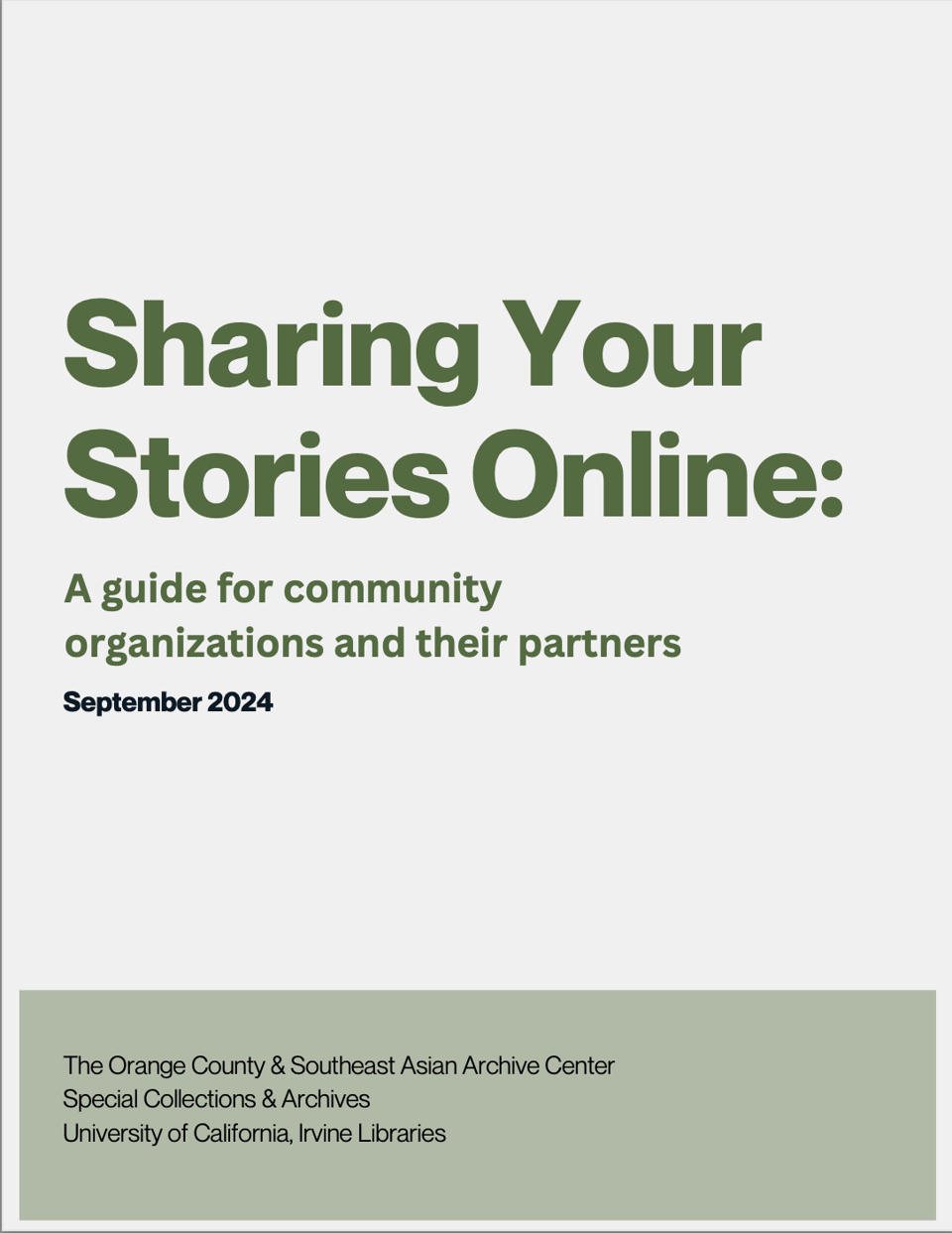ARTchivist's Notebook: New Community Archives Publications!
New Publications For and About Community Archives!
I’m super-excited to share several new publications relevant to community-based archives! If you noticed that ARTchivist’s Notebook was a little quiet this year, it’s because I was tapped out writing several in-depth research reports. The first ones to be published are from UC Irvine Libraries Community-Centered Archives Practice: Transforming Education, Archives, and Community History (CCAP TEACH) and the California Digital Library. We focused on community-based organizations representing marginalized communities (outside of academic, museum, and government archives) and their access to two forms of online sharing: aggregators like the Digital Public Library of America, and online exhibitions. There are three outcomes of the Community-Centered Digital Collections & Digital Exhibitions project:

The National Survey Results reports on two surveys: one that looked at the DPLA Hubs’ policies and services for community organizations, and the other that polled community organizations themselves and their efforts to share their collections and stories online. We found there is often an understanding and communication gap between the Hubs and community organizations, as well as a lack of resources on both sides.
 The Organization and Curator Interview Report draws from interviews with representatives of community organizations and curators who have created online exhibitions in partnership with community organizations. I asked them about their experiences with online aggregators and exhibitions, as well as in partnering with larger, more well-resourced institutions. We learned that online sharing is not "one-size fits all" and that there is a need for more nuanced systems that better reflect values of care, transparency, and reciprocity.
The Organization and Curator Interview Report draws from interviews with representatives of community organizations and curators who have created online exhibitions in partnership with community organizations. I asked them about their experiences with online aggregators and exhibitions, as well as in partnering with larger, more well-resourced institutions. We learned that online sharing is not "one-size fits all" and that there is a need for more nuanced systems that better reflect values of care, transparency, and reciprocity.
These reports are filled with information on the challenges, gaps, and opportunities facing community organizations as they endeavor to get their collections online, but we also wanted to make this research actionable and give something back to the community organizations who made it possible. With that in mind, we created a more succinct and friendly guide:
 Sharing Your Stories Online: A guide for community organizations and their partners is based on our research and is structured like an FAQ. It is full of definitions, considerations, and resources for community organizations as they put their content and collections online. It also includes guidance for larger institutions that may want to partner with them.
Sharing Your Stories Online: A guide for community organizations and their partners is based on our research and is structured like an FAQ. It is full of definitions, considerations, and resources for community organizations as they put their content and collections online. It also includes guidance for larger institutions that may want to partner with them.
Although I spent the majority of my time on this project working on the research reports, I am most proud of this guide, which distills what we learned in a form that is quicker and easier to digest and can be used to make informed decisions about online sharing and establish more mutually satisfying collaborations.
Here’s what one of our interviewees had to say:
I recently finished reading the guide and just found it so easy to read and filled with useful resources. You all did an excellent job and I'm so happy to have been included in the process…As for what I found most useful, your breakdown of aggregators like Calisphere (not so intimidating anymore), explanation on digital humanities, and copyright and funding resources.
Another kind of community archives

My art writing career has also slowed way down this year, but I did manage to review this book about Chinese American photographer, Corky Lee, who was a community archives in and of himself. Lee dubbed himself the “Undisputed, Unofficial Asian American Photographer Laureate” and his friends often said that he seemed to be “everywhere” in his native New York City: documenting protests, community meetings, and cultural festivals, but also more intimate moments among restaurant workers, seamstresses, artists, and families. Although documentary was his main mode, he wasn’t above orchestrating a scene to make a point. Most notably, he restaged the photograph at Promontory Point where the transcontinental railroad was completed, in order to correct the exclusion of Chinese American laborers from the original image in 1869. If that’s not activating the archives for justice, I don’t know what is.